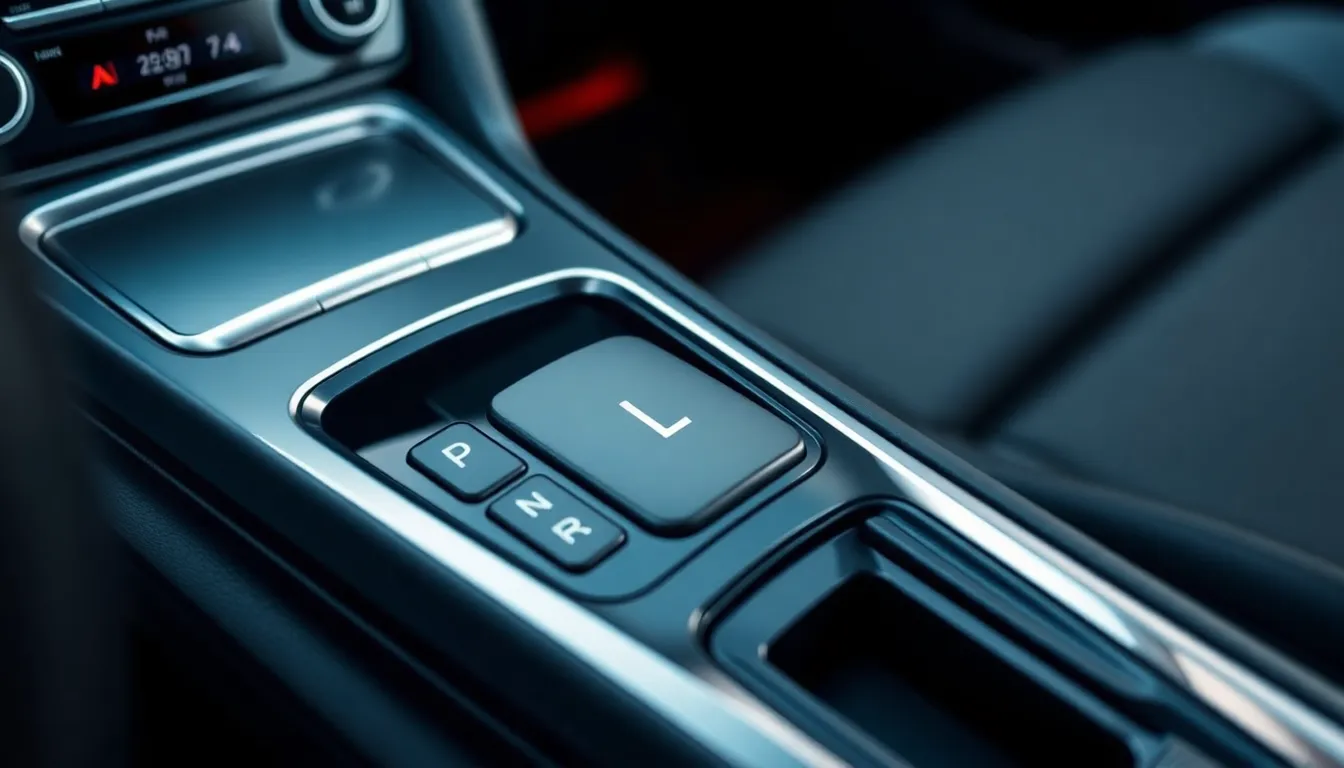Table of Contents
ToggleHave you ever stared down at your car’s gear shift, squinting at the letter ‘L’ and wondering if it stands for “Lemonade” or perhaps “Lollipop”? Spoiler alert: it’s neither. In the grand ensemble of gear shift terminology, ‘L’ actually plays a pretty important role. So, buckle up as we jump into the nitty-gritty of what ‘L’ truly means in your vehicle’s transmission system, while shedding some light on when and why it matters. You might just find yourself using it more than you’d expect.
Understanding Gear Shift Terminology

To truly grasp what ‘L’ stands for, it’s essential to understand basic gear shift terminology. Gear shifts primarily control the power and speed of the vehicle. You may have noticed several letters and numbers, including P (Park), R (Reverse), N (Neutral), and D (Drive). Each serves a distinct function, designed to enhance driving experience and safety.
The letter ‘L’, in this terminology puzzle, typically stands for “Low.” This indicates a lower gear, which can be incredibly useful in specific driving conditions where power and torque are crucial. Understanding these basic terminologies can make a significant difference, especially for those who are unfamiliar with automatic transmission systems.
The Role of L in Automatic Transmissions
In automatic transmissions, ‘L’ is often a forgotten hero. Unlike the D for Drive, which shifts through gears automatically as the vehicle gains speed, ‘L’ locks the transmission into lower gears. This locking mechanism provides increased power and torque, making it perfect for maneuvering through tough terrains or steep inclines.
To illustrate, imagine navigating a steep hill. Choosing ‘L’ optimizes engine output, allowing the car to climb without straining the engine. This ensures better control and can even save the vehicle from potential damage caused by overexertion.
When To Use L on Your Gear Shift
Knowing when to use ‘L’ is just as important as understanding what it means. As a rule of thumb, it’s advisable to shift to ‘L’ in situations requiring better acceleration. Driving in snow, mud, or hilly environments are prime scenarios for engaging this lower gear.
In snowy or slippery conditions, using ‘L’ can help prevent wheel spin. This is because the lower gear provides the extra traction needed to get moving without losing control. Similarly, during a steep descent, ‘L’ helps maintain a slow and steady speed, reducing the reliance on brakes and minimizing wear, making it a win-win for both the driver and the vehicle.
Benefits of Using L in Driving
Utilizing ‘L’ on the gear shift isn’t just a matter of preference: it comes with numerous benefits. First and foremost is enhanced control. By engaging ‘L’, drivers have greater command over speed and power, especially in challenging driving conditions. This elevated control can lead to safer navigation and a more confident driving experience.
Also, using ‘L’ can extend the life of your brakes. When going down steep hills, using engine braking through ‘L’ can alleviate pressure on the brake system. This means less wear and cost savings, as drivers might not have to replace brake components as frequently.
In essence, using ‘L’ can save drivers headaches in care maintenance while boosting their confidence behind the wheel.
Common Misconceptions About L in Gear Shifts
Even though its critical role, ‘L’ is often misunderstood. Many drivers mistakenly think that using ‘L’ is only for expert drivers or for vehicles equipped for off-road conditions. But, this couldn’t be further from the truth. Anyone can use it: it’s designed for anyone needing extra power and torque.
Another common misconception is the belief that ‘L’ should only be used in particular conditions. While it excels in muddy or hilly scenarios, it isn’t limited to those situations alone. In fact, drivers may find it useful in various other driving contexts, such as when towing or transporting heavy loads. Understanding these misconceptions can empower drivers to use their vehicle’s capabilities more effectively.







